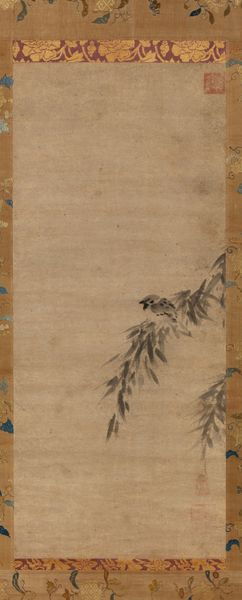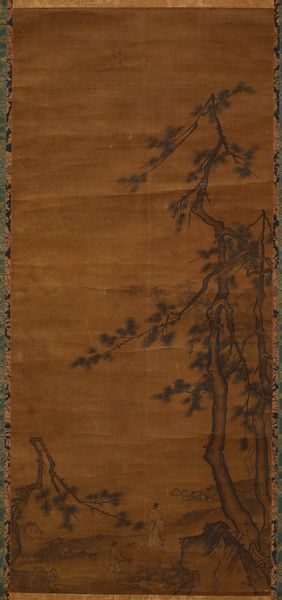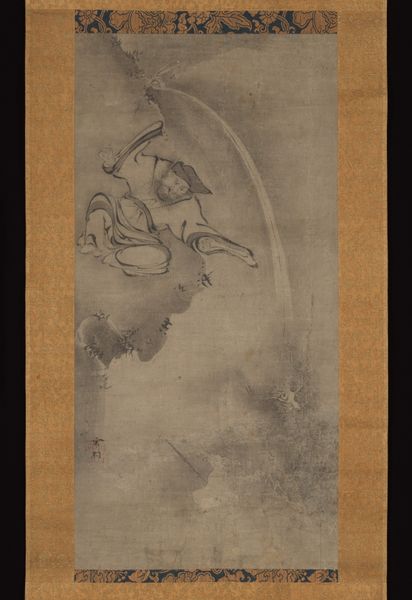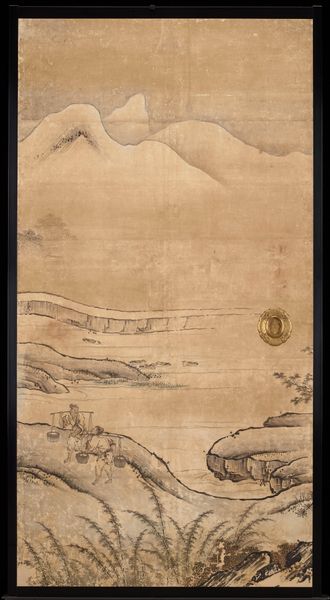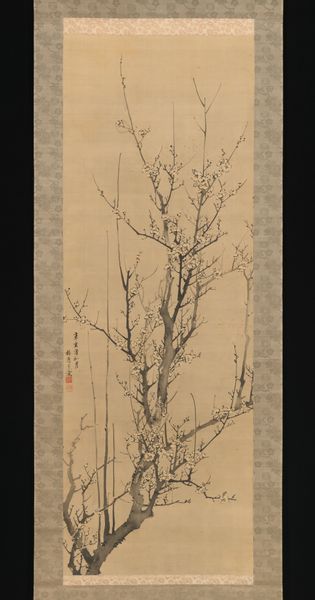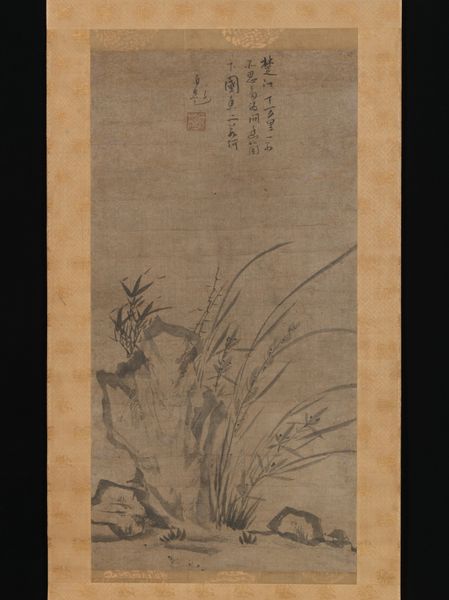
drawing, paper, ink-on-paper, ink
#
drawing
#
medieval
#
asian-art
#
landscape
#
japan
#
paper
#
ink-on-paper
#
ink
#
watercolor
Dimensions: 35 1/8 × 12 7/16 in. (89.22 × 31.59 cm) (image)65 3/8 × 13 3/8 in. (166.05 × 33.97 cm) (mount, without roller)
Copyright: Public Domain
Editor: This is “Orchids,” an ink-on-paper drawing dating back to the late 14th or early 15th century, by Gyokuen Bonpō. It’s currently hanging here at the Minneapolis Institute of Art. I find the composition strikingly simple. What's your initial reading of this piece? Curator: Ah, yes, Bonpō. A breath of fresh air in a scroll, isn’t it? What captivates me is not just the elegant, sparse brushstrokes, but what they *don't* depict. There's a certain meditative quality... like a haiku painted on silk. It asks you to complete the picture in your mind. Where do you think he intends to transport us, if anywhere? Editor: That’s a great question. Perhaps a quiet, secluded garden, a world away from, say, a bustling city? I suppose that’s precisely why the simplicity appeals. Curator: Precisely. And within that quietude, consider the cultural context: in Zen Buddhism, these wild orchids, far from being showy blooms, symbolize humility, integrity, and solitude – virtues highly prized. It's like Bonpō whispers, "Less is indeed more," pushing back against the flashy excess. What does it make you think about *today*? Editor: It certainly resonates today with minimalism becoming such a sought-after quality, an intentional reduction for emphasis... So, the very *act* of painting like this becomes almost a statement of intent, a deliberate contrast. I never would have picked up on that! Curator: Exactly! It goes beyond the visual; it's about philosophy made visible. I walk away feeling like this orchid tells me to embrace the present moment...to seek peace in simplicity. And I didn't have to read the label on the wall.
Comments
No comments
Be the first to comment and join the conversation on the ultimate creative platform.



